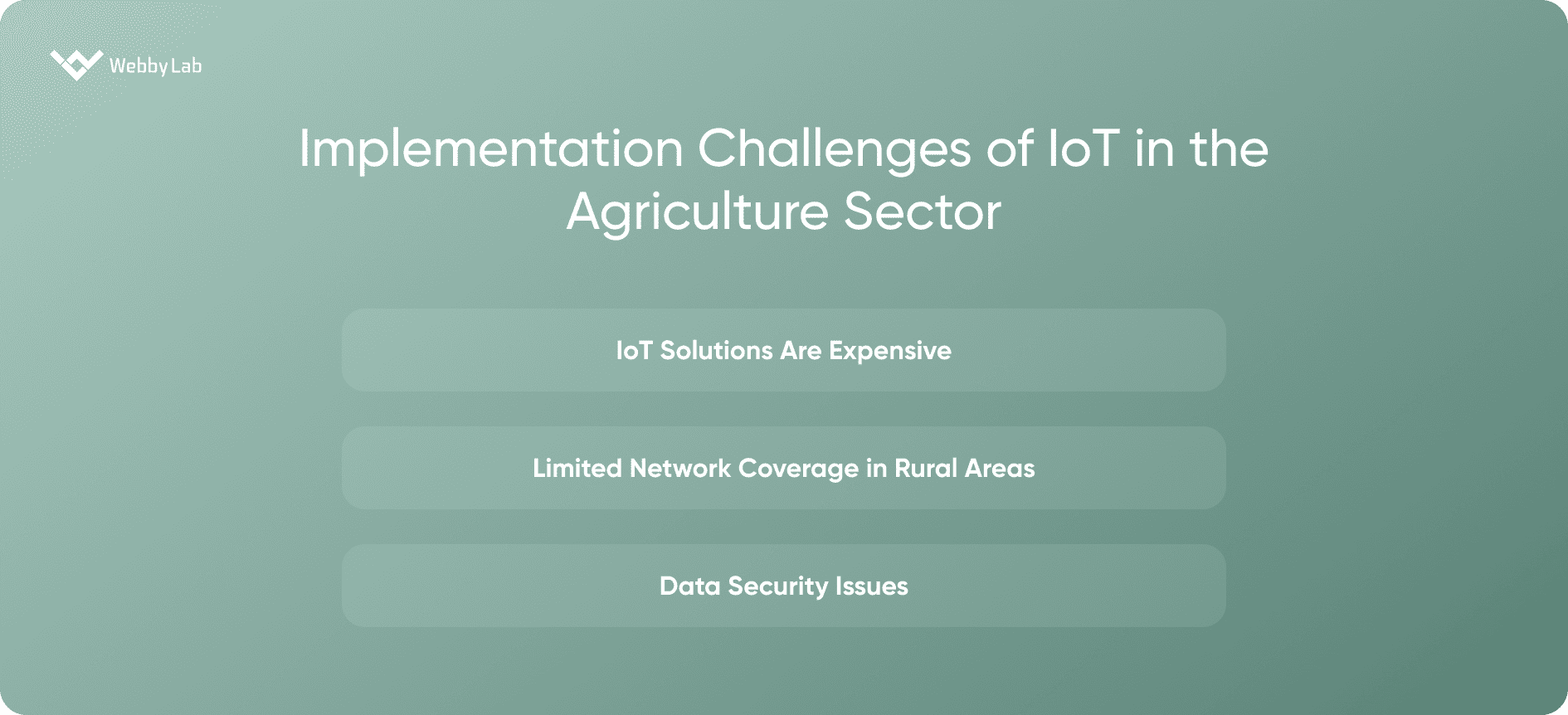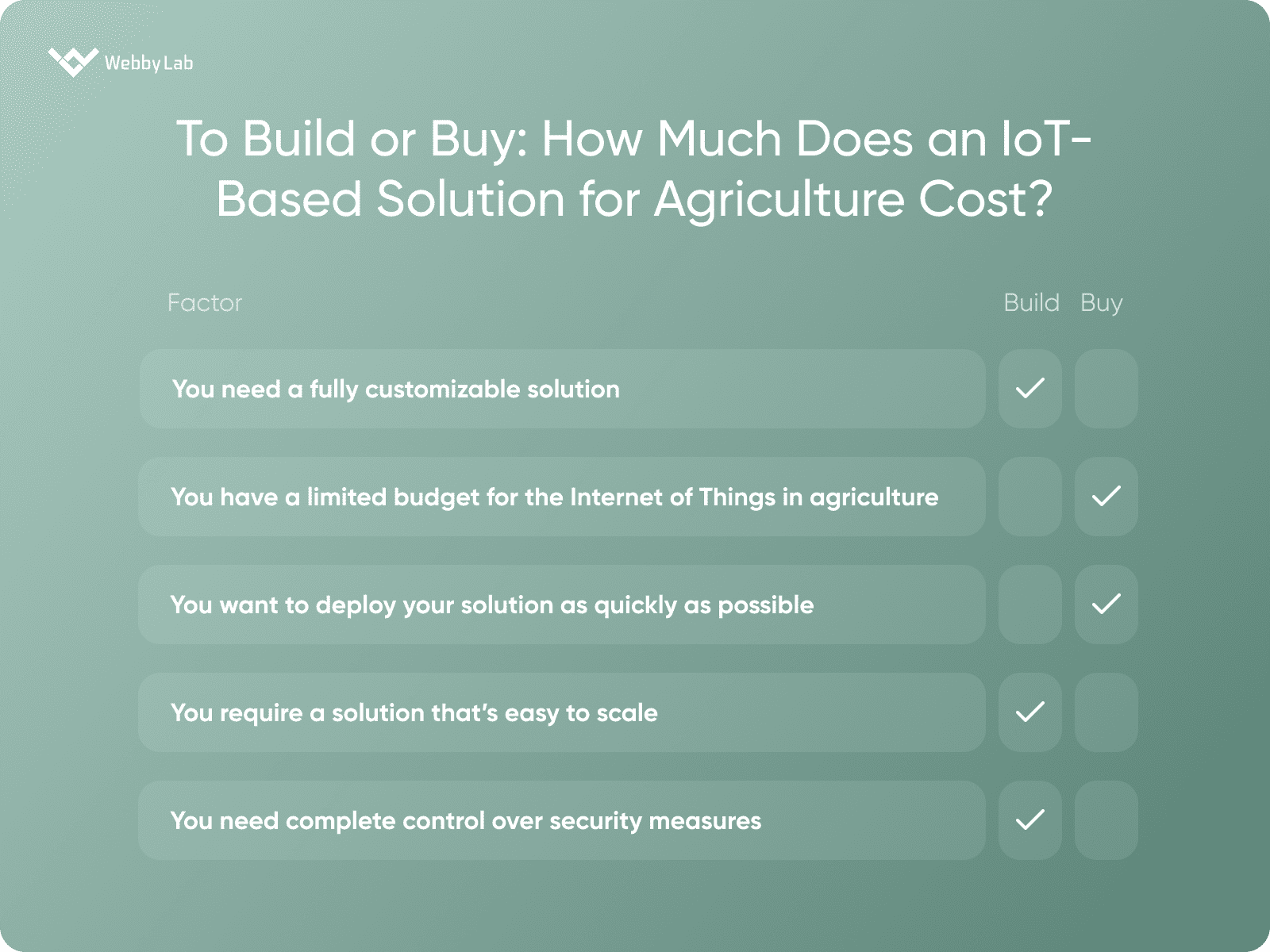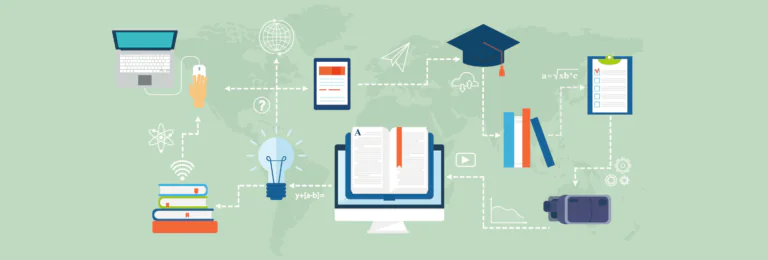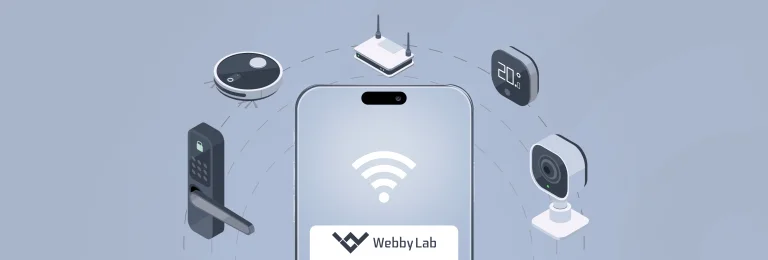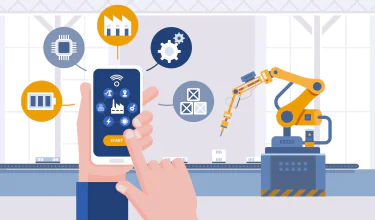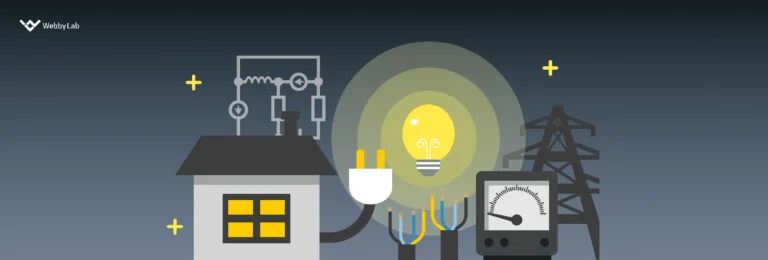How IoT is Revolutionizing Agriculture: Cost-Effective Solutions for Smart Farming
Written by:

Kostiantyn Oliynyk
Head of IoT at Webbylab
With a robust academic background in Telecommunication Systems Engineering, I apply my knowledge to lead innovations in the IoT domain. Starting as the first team member in the newly formed IoT department at WebbyLab, I've spearheaded its growth, fostering the expansion into embedded and hardware development alongside our core software projects. My dedication lies in pushing the boundaries of IoT technology, fostering a culture of innovation and excellence that profoundly impacts our clients' operational success.
The cost of implementing agriculture in IoT depends on the size of your farm, the precision farming technologies you need, and the complexity of the solution. Basic systems typically start around $10,000. For a more accurate estimate, contact our team at WebbyLab.
The time it takes to implement precision farming using IoT varies, but a basic setup might take a few months. If you add complex IoT smart features like multiple wireless sensors, the timeline could extend to a year or more.
An impressive ROI is probably one of the top smart farming benefits. The return on investment can be substantial, as IoT leads to reduced resource waste, better crop yields, and labor savings.
While smart agriculture using IoT automates many tasks, having someone to oversee the system might be helpful.
IoT solutions benefit all farming types, especially vertical farming, greenhouse operations, and precision-based field management. Larger farms with specific challenges, like water scarcity or pest control, can often see the greatest advantages.
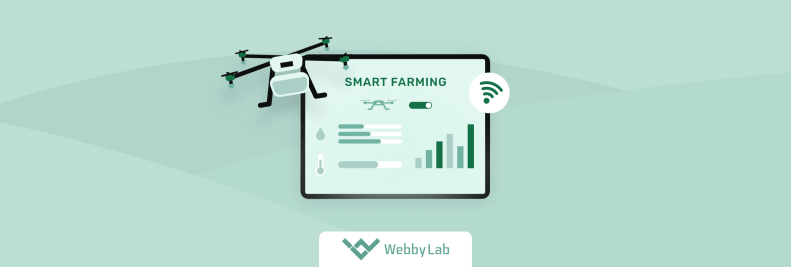

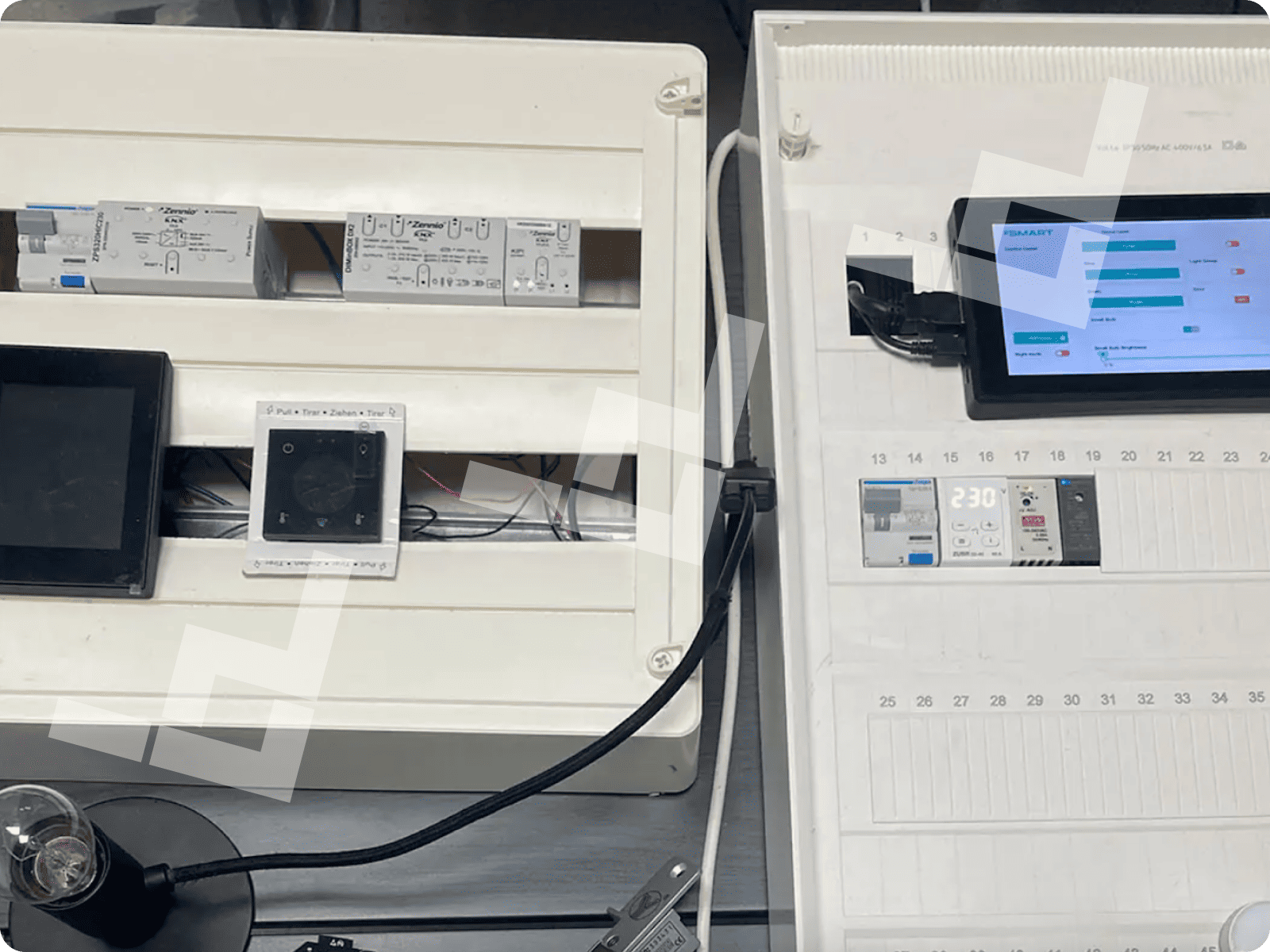 The hardware center of the smart greenhouse system built by WebbyLab
The hardware center of the smart greenhouse system built by WebbyLab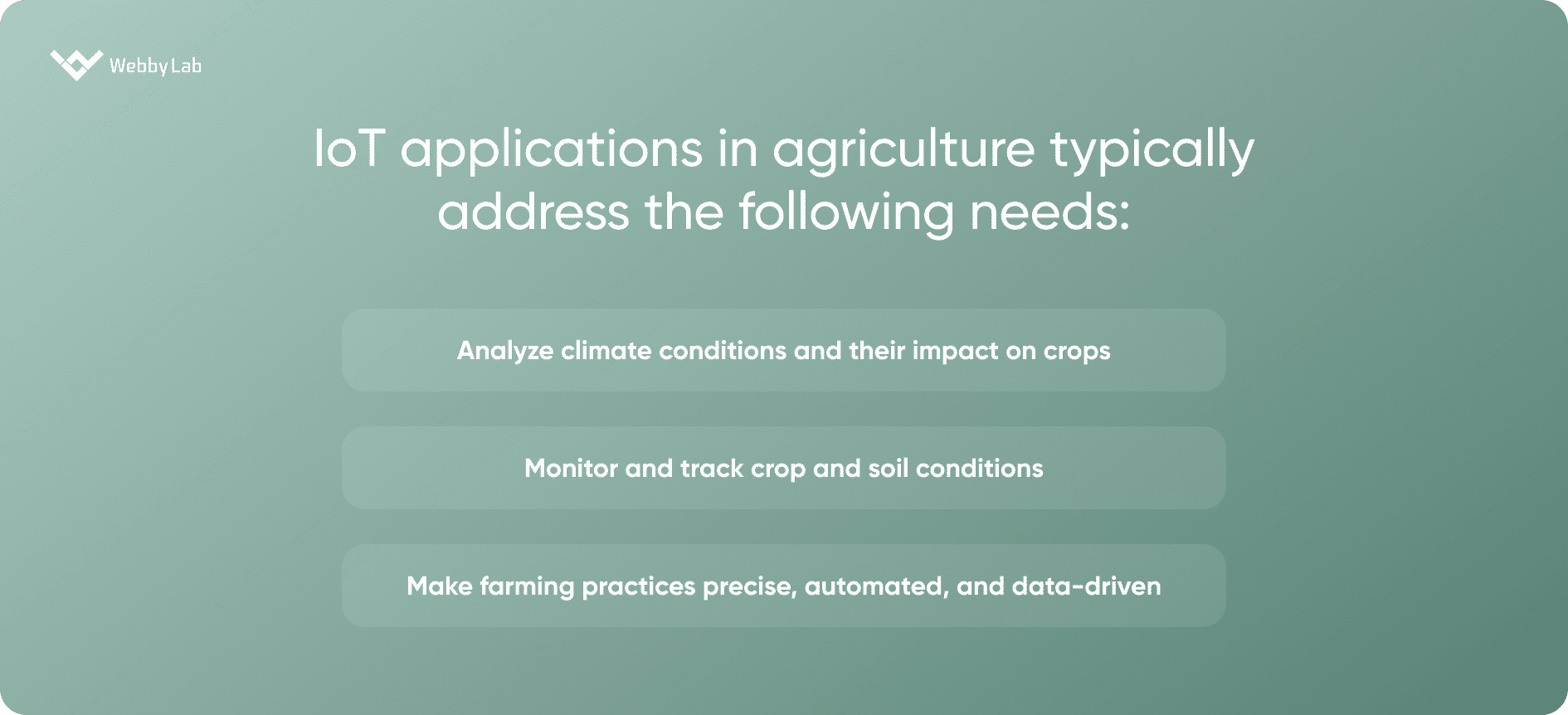
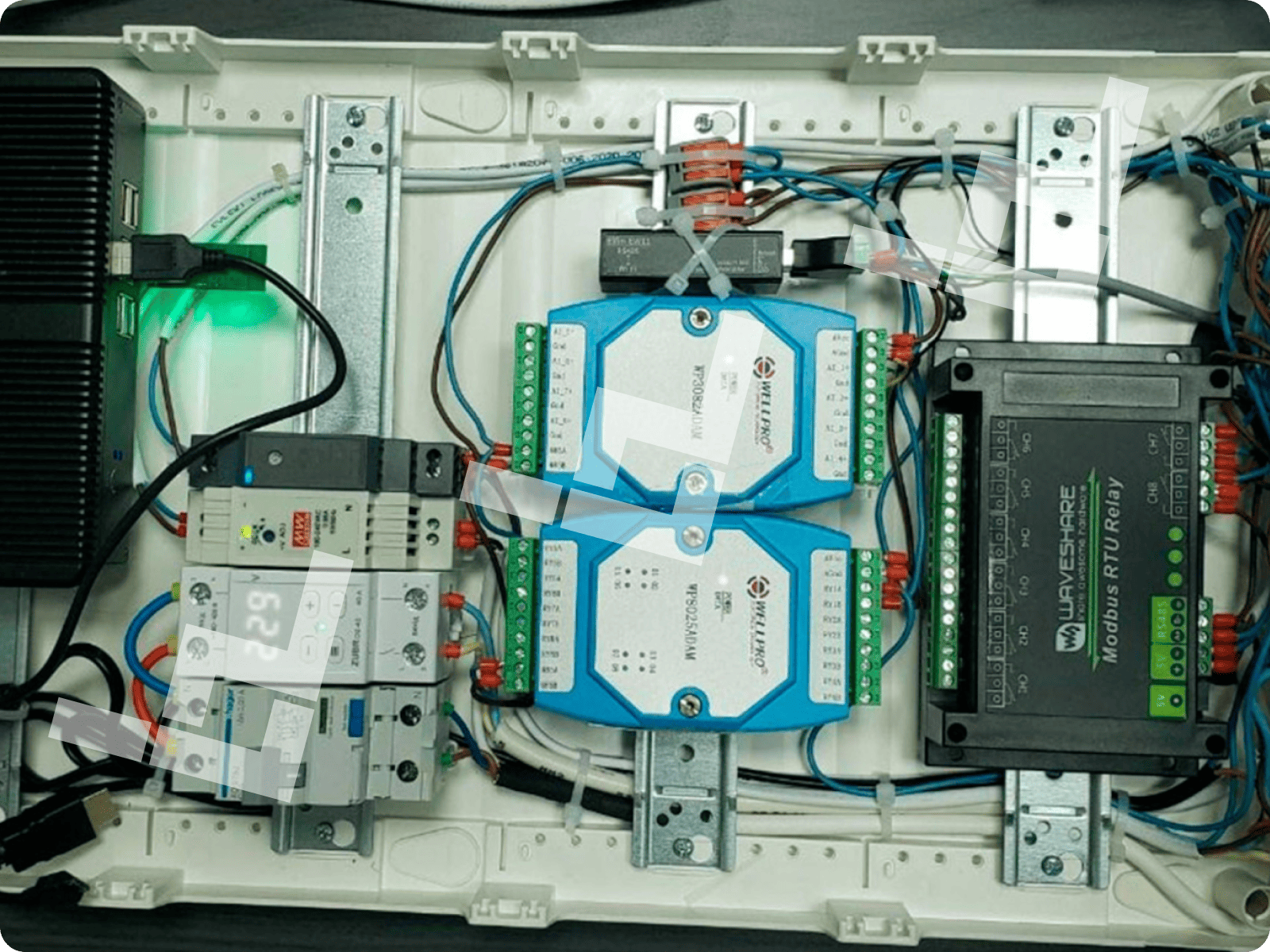 Hardware connected to the smart greenhouse’s mini-computer
Hardware connected to the smart greenhouse’s mini-computer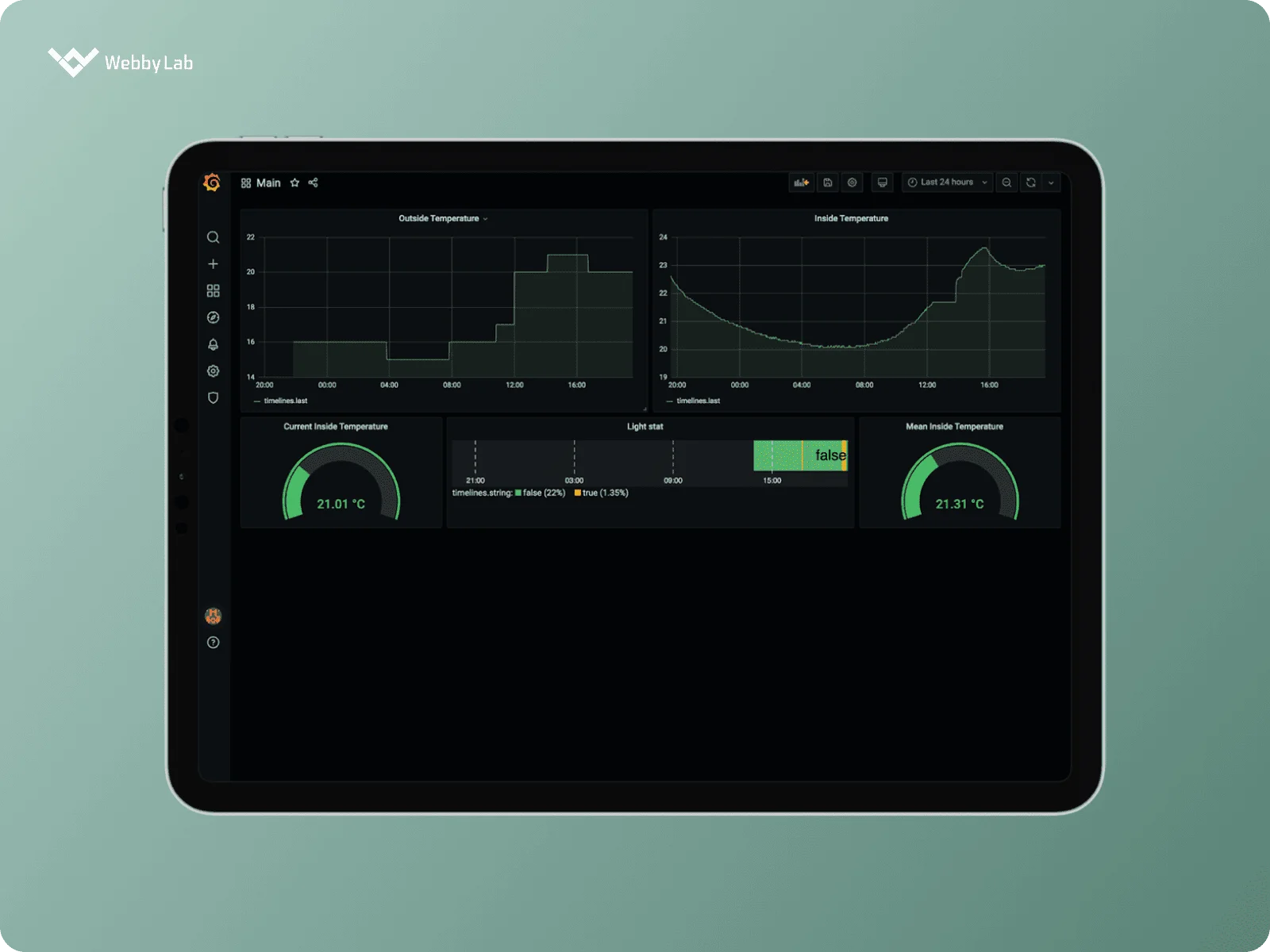 A dashboard for analyzing IoT greenhouse data
A dashboard for analyzing IoT greenhouse data